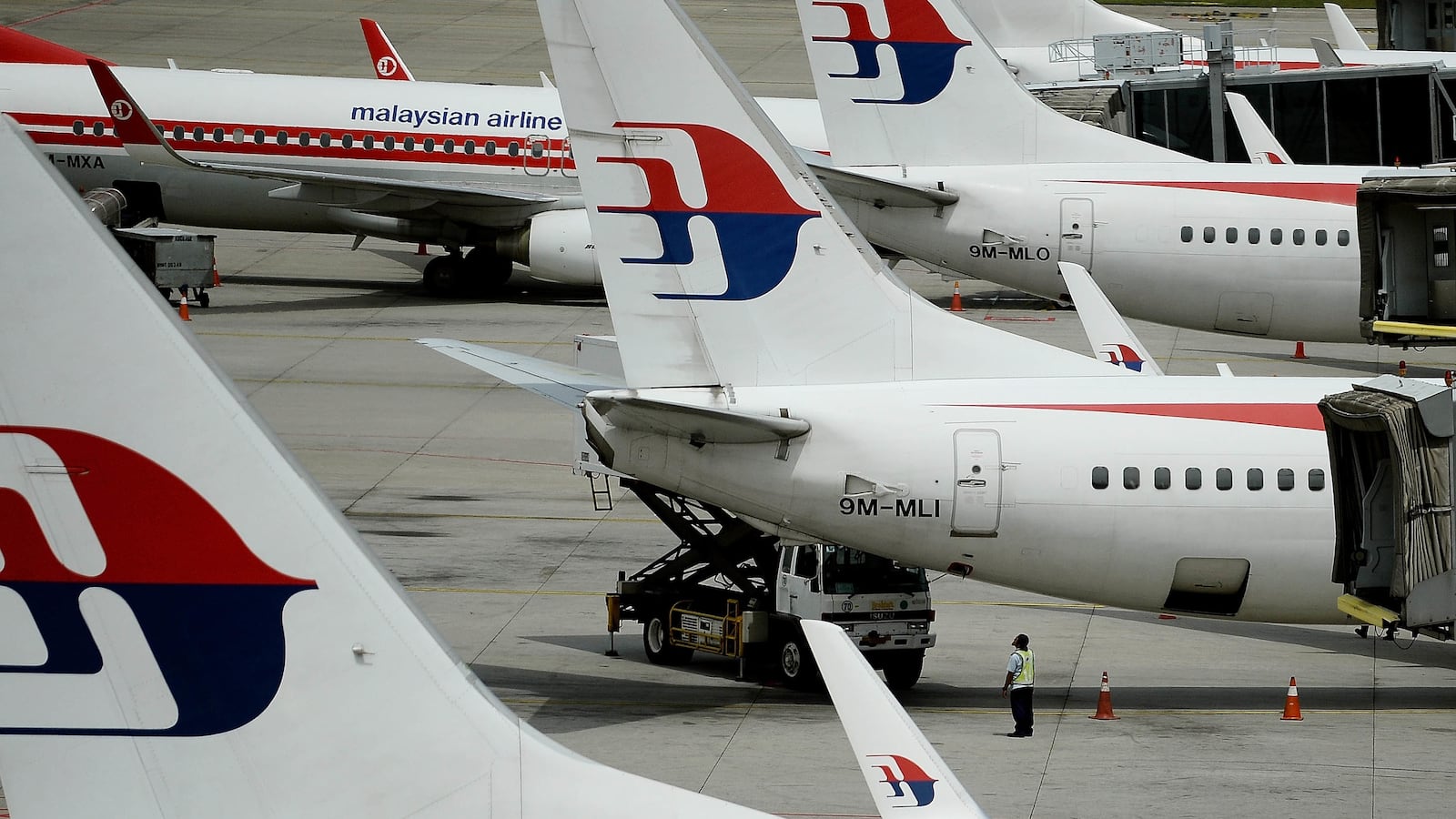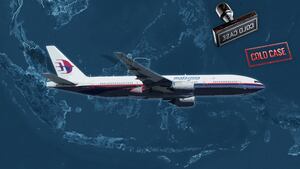There are few things more monstrous to contemplate than an airline pilot going rogue and deliberately sending himself and 238 other mortals into a headlong death dive into the ocean.
But—once again—that is what is being alleged of Capt. Zaharie Ahmad Shah, the 53-year-old pilot of Malaysia Airlines Flight 370, which went missing on the night of March 8, 2014, bequeathing the greatest mystery in the history of modern commercial aviation.
This time the accuser is surprising: William Langewiesche, one of the most authoritative and respected aviation writers, in a long report in the latest issue of The Atlantic.
After reading Langewiesche’s report, I am inclined to believe that there are few things more monstrous than blaming the pilot on the basis of what amounts to little more than hearsay.
Throughout the report, Langewiesche follows the Malaysian custom of identifying a person by their first name rather than the last and this is the core of his indictment:
<p>“The truth, as I discovered after speaking in Kuala Lumpur with people who knew him or knew about him, is that Zaharie was often lonely and sad… His wife had moved out… Zaharie seems to have become somewhat disconnected from his earlier, well-established life… There is a strong suspicion among investigators in the aviation and intelligence communities that he was clinically depressed.”</p>
On the first anniversary of the disaster, the international team under Malaysian leadership (it included experts from the U.S. National Transportation Safety Board as well as the British and French equivalents) issued a report, nearly 200 pages long, as required by regulations, giving a technical profile of the flight and the airplane that was obviously severely limited by the absence of any physical remnants from the Boeing 777.
This report did, however, include a detailed and measured assessment of Zaharie. It drew a picture of a man at the peak of a successful career, having progressed as a pilot with impressive proficiency.
Zaharie had flown more than 18,000 hours on commercial jets, 8,659 of those hours on the 777, the airplane used for Flight 370.
There was nothing suspicious in his financial affairs. He had two houses and three cars. He had two savings accounts and one current account. There was no record of his having taken out a life-insurance policy.
The investigators basically removed Zaharie from any suspicion of mass murder and suicide.
They recovered and examined surveillance video of Capt. Shah’s behavior at Kuala Lumpur Airport while he was preparing for four flights, including the final one. “There were no behavioral signs of social isolation, change in habits or interest, self neglect, drug or alcohol abuses” the report stated, adding “There were no significant changes in his life style, interpersonal conflict, or family stresses.”
Yet Langewiesche casually dismisses this and calls it “either irrelevant or at odds with what was knowable about Zaharie.”
And what might be “knowable” about Zaharie? Langewiesche’s information is anecdotal without multiple sourcing:
<p>“One of Zaharie’s lifelong friends, a fellow 777 captain whose name I have omitted because of possible repercussions for him. He too believed that Zaharie was guilty, a conclusion he had come to reluctantly… It doesn’t make sense. It’s hard to reconcile with the man I knew. But it’s the necessary conclusion.” And then the anonymous pilot adds, “Zaharie’s marriage was bad. In the past he slept with some of the flight attendants. We all do. You’re flying all over the world with these beautiful girls in the back. But his wife knew.”</p>
Langewiesche concludes:
<p>“He agreed that this was hardly a reason to go berserk, but thought Zaharie’s emotional state might have been a factor.”</p>
The fact that, a year after the event, there is no forensic case against Zaharie is in great contrast to how Malaysian officials themselves (before an international team was assembled) responded. Blaming the pilots was their first instinct.
They staged a deliberately public raid on the captain’s home. Soon afterward, they said they had discovered a computer with a flight-simulator program that Zaharie had used to rehearse a devilish plan to hijack his own airplane.
Langewiesche enthusiastically follows this same conspiracy theory. He explains that Zaharie’s Microsoft flight simulator had been downloaded by the FBI and revealed several hundred routes he had flown on it, one of which roughly matched the flight path of MH370 over the southern Indian Ocean to nowhere.
He quotes Victor Iannello, an engineer and entrepreneur in Virginia, who analyzed that flight and concluded that it was the only one that Zaharie did not run as a continuous flight. Instead he “flew” it in a series of stages judging how much fuel it would consume, Iannello said.
Once more, Langewiesche then undermines an assertion by qualifying it: “Without a note of explanation, Zaharie’s reasoning is impossible to know. But the simulator flight cannot be dismissed as a random coincidence.”
In fact, the FBI said it found nothing incriminating in the computer simulations, and certainly nothing that came close to the erratic course that the flight first followed.
You can be damned sure that the Malaysian authorities of that time, buried in a widespread swamp of corruption, would have persisted in blaming the pilots had there been any shred of evidence to do so since dead men cannot ever rebut the smear.
Langewiesche makes a detailed analysis of the route taken by the 777 from the time it departed its allotted flight path to Beijing. On the basis of no evidence, because there is none, he concludes that Zaharie waited for his co-pilot, 27-year-old Fariq Abdul Hamid, to leave the cockpit on a break and then de-pressurized the airplane, to create the condition in the passenger cabin known as hypoxia, in which the passengers and cabin crew (and presumably Hamid) would have first become unconscious and then, when the emergency oxygen supply from face masks ended, they would have died.
Langewiesche wraps up his theory by explaining that Capt. Zaharie, with a longer supply of oxygen in the flight crew’s system, then restored the airplane’s pressurization, leaving him the only survivor.
There has always been a serious flaw in the scenario of pilot-directed (or other) hijacking. Had Zaharie really wanted to disappear his jet, he would not have made the sudden turn to the left, as the airplane did, but to the right, where, flying over the South China Sea, he would have quickly slipped beyond any radar coverage.
Instead, by turning left, the jet headed straight into airspace covered by overlapping radars based in Malaysia, Vietnam, Thailand, and Indonesia—as well as their air forces, which could have shot down a hijacked plane.
Not only that, but the new navigational heading taken by MH370 was one identical to what is named Terminal Primary Approach for the nearest airport, Sultan Ismail Petra Airport at Kota Bharu—on the eastern coast of Malaysia. That would have been first choice for an emergency landing at night.
But no attempt at an emergency landing was made, although the flight passed over at least two other possible emergency-landing airports. The airplane never descended from cruise height. This is just part of the enduring puzzle that cannot be explained and does not make sense—any more than Langewiesche’s scenario can be supported on any evidence.
There is also an unfortunate tone of condescension in Langewiesche’s musings of Zaharie’s state of mind and actions:
<p>“It is easy to imagine Zaharie toward the end, strapped into an ultra-comfortable seat in the cockpit, inhabiting his cocoon in the glow of familiar instruments, knowing that there could be no return for what he had done, and feeling no need to hurry…..”</p>
And he implies that Zaharie sat there right through to the end and even contributed to making the end more violent:
<p>“There is some suspicion, from fuel-exhaustion simulations that investigators have run, that the airplane, if simply left alone, would not have dived quite as radically as the satellite data suggests that it did—a suspicion, in other words, that someone was at the controls at the end, actively helping to crash the airplane.”</p>
This is nonsense, and Langewiesche should have known so, since he recounts the importance of the sole source of physical evidence that eventually came to light, when more than a score of pieces of debris from the 777 washed up on beaches in the western Indian Ocean.
One of the largest pieces, an outboard wing flap, was found on Pemba Island off the coast of Tanzania, in June 2016. This was highly significant to investigators because this flap could only be activated for takeoff or landing by command of the pilot. It could not be independently moved by the autopilot.
After several weeks of detailed scrutiny, investigators concluded that the flap had not been deployed, and therefore the jet had plunged into the ocean once its fuel was exhausted without any human intervention.
Langewiesche, suggesting the opposite, adds his own dramatic color by saying “The airplane disintegrated into confetti when it hit the water.”
That idea is absolutely confounded by the solidity of the pieces of debris that survived. The main and heaviest parts of the jet, the engines and the fuselage, would have been shattered on impact, but never shredded like confetti. Confetti better describes Langewiesche’s detective work.
Of course, there have always been aviation industry interests that were all too ready to believe that the pilots did it. That would let everybody else off the hook.








